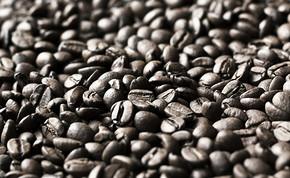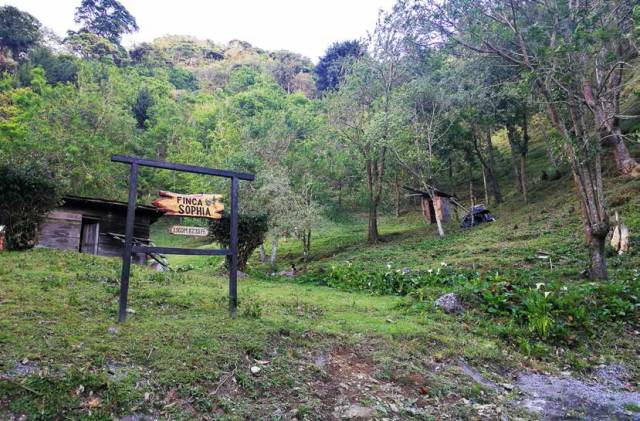The Origin of Crystal Mountain Coffee in Cuba
Follow the caf é (Wechat official account vdailycom) and found that Beautiful Cafe opened a small shop of its own.
Cuba Cubita:
In 1748, coffee was introduced into Cuba from Dominica, and Cuba began to grow coffee ever since. Cuba is an archipelago in the northern Caribbean Sea. With fertile land, humid climate and abundant Rain Water, Cuba can be called a natural treasure land for coffee cultivation. The suitable natural conditions provide a favorable natural environment for the growth of coffee trees, and coffee is well planted and developed here.
The coffee beans selected by Cuba Cubita are Arabica varieties grown in the Crystal Mountains of Cuba, which are known as "unique Caribbean flavor coffee" and "special coffee beans in island coffee beans".
The best coffee growing area in Cuba is located in the Central Mountains. Because this area not only grows coffee, but also produces quartz, crystal and other precious minerals, it is also known as Crystal Mountain. Crystal Mountain is geographically adjacent to the Blue Mountain Mountains of Jamaica, with similar climatic conditions and similar flavor to Blue Mountain Coffee, comparable to the Blue Mountains of Jamaica, also known as "the Blue Mountains of Cuba". Cuba began to turn all the best coffee beans from the Crystal Mountain region into "Cubita" brand coffee.
The selected Cuban Cubita coffee beans have large particles and high maturity, and the raw coffee beans are all picked by hand, using water washing refining method to remove defective beans and other impurities to the maximum extent, coupled with the careful roasting of experienced roasters, it is rare to have the unique coffee beans in the world.
Crystal Mountain Coffee beans are typical island beans with a clean and delicate taste, slightly sour taste, not strong but long-lasting, with sweet fruit aromas.
Cuban Cubita is famous for its mellow and fragrant taste. And the Cuban Cubita only makes individual coffee, which has incomparable characteristics in terms of taste and purity.

The Origin of Crystal Mountain Coffee in Cuba
[CubitaCoffee], in Cuba, the cultivation of coffee is regulated by the state. Cuba has fertile land, humid climate and abundant rain, which can be called a natural treasure land for coffee cultivation, and suitable natural conditions provide a favorable natural environment for the growth of coffee trees.
Cuba's best coffee growing area is located in the Central Mountains, because this area in addition to growing coffee, there are quartz, crystal and other precious minerals, so it is also known as Crystal Mountain.
All the coffee is picked by hand, and the high-quality export coffee will be treated with water washing to remove defective beans and other impurities to the maximum extent. "Crystal Mountain Coffee" is almost synonymous with top Cuban coffee: soft and long-lasting acidity, clean taste, meticulous and smooth, excellent balance of acidity and bitterness.
The planting History of Coffee in Cuba
Coffee was introduced to Cuba from Domiga in 1748, but it was not until the arrival of French immigrants in 1791 that the coffee industry began. By 1827, there were about 2000 coffee plantations on the island, and coffee overtook the sugar industry as a major export product.
Due to historical and political reasons, the ownership of coffee cultivation experienced the process of private ownership and nationalization. After the Castro Revolution from 1953 to 1961, the nationalization and production of coffee estates were greatly reduced.
At that time, experienced growers fled Cuba because of the revolution, the government did not take measures to promote the process of coffee agriculture, and coffee cultivation went through a period of turmoil on the island.
Important Notice :
前街咖啡 FrontStreet Coffee has moved to new addredd:
FrontStreet Coffee Address: 315,Donghua East Road,GuangZhou
Tel:020 38364473
- Prev

Panama BOP of the Year 2017 Super Summer is born!
Pay close attention to the coffee comment (Weixin Official Accounts vdailycom ) and find that the beautiful coffee shop opens its own small shop at 7:00 a.m. Beijing time on July 19,2017 Best of Panama (BOP) bidding begins, and major sellers around the world compete fiercely for nearly six hours. Sophia, the first summer washing champion to enter BOP bidding, was sold to Japanese company SAZA Coffee for 254.8 US dollars
- Next

Coffee comparable to the Blue Mountains of Jamaica: Cuban Crystal Coffee
Following Kaibei (Wechat official account vdailycom) found that the Beautiful Cafe opened a small shop of its own. Cuba's best coffee-growing area is in the Central Mountains. Because this area not only grows coffee, but also produces quartz, crystal and other precious minerals, it is also known as Crystal Mountain. Crystal Mountain is adjacent to the Blue Mountains of Jamaica, with similar climatic conditions and flavor.
Related
- Detailed explanation of Jadeite planting Land in Panamanian Jadeite Manor introduction to the grading system of Jadeite competitive bidding, Red bid, Green bid and Rose Summer
- Story of Coffee planting in Brenka region of Costa Rica Stonehenge Manor anaerobic heavy honey treatment of flavor mouth
- What's on the barrel of Blue Mountain Coffee beans?
- Can American coffee also pull flowers? How to use hot American style to pull out a good-looking pattern?
- Can you make a cold extract with coffee beans? What is the right proportion for cold-extracted coffee formula?
- Indonesian PWN Gold Mandrine Coffee Origin Features Flavor How to Chong? Mandolin coffee is American.
- A brief introduction to the flavor characteristics of Brazilian yellow bourbon coffee beans
- What is the effect of different water quality on the flavor of cold-extracted coffee? What kind of water is best for brewing coffee?
- Why do you think of Rose Summer whenever you mention Panamanian coffee?
- Introduction to the characteristics of authentic blue mountain coffee bean producing areas? What is the CIB Coffee Authority in Jamaica?

